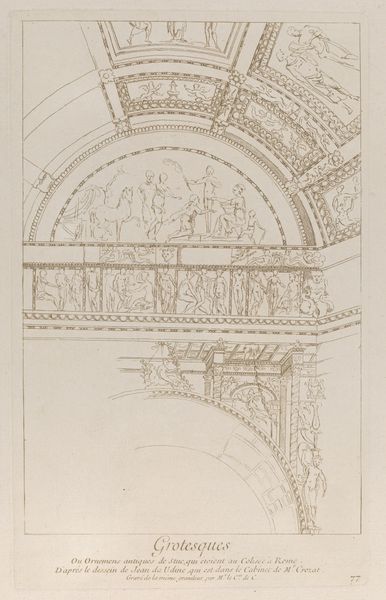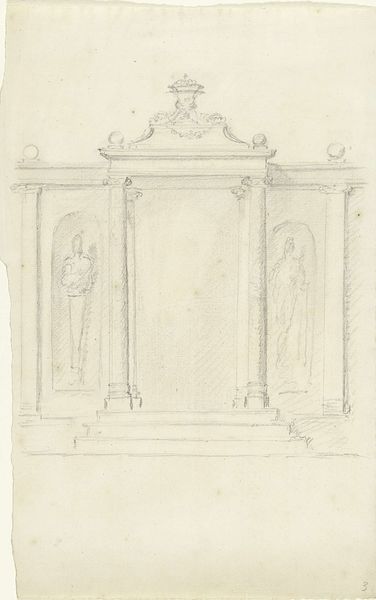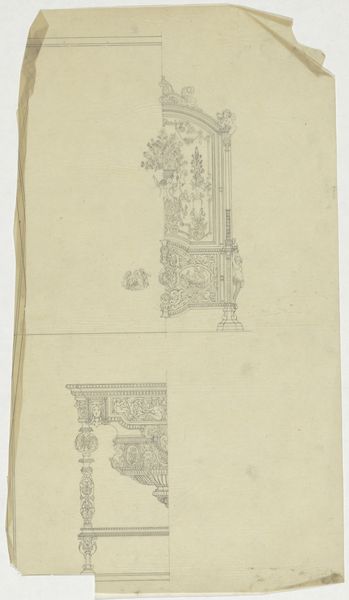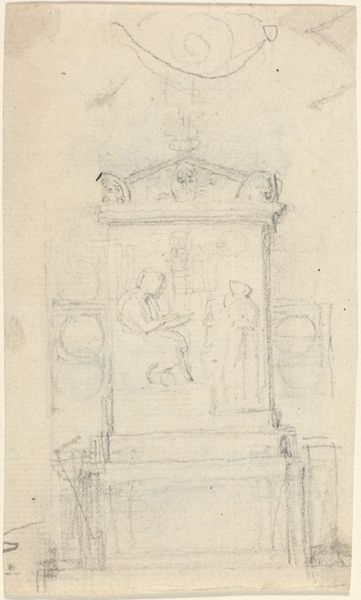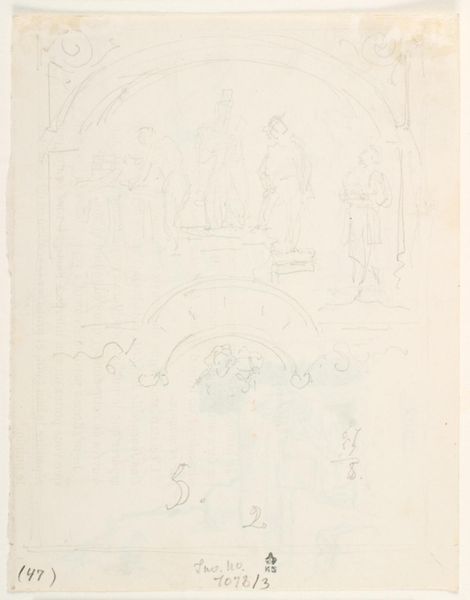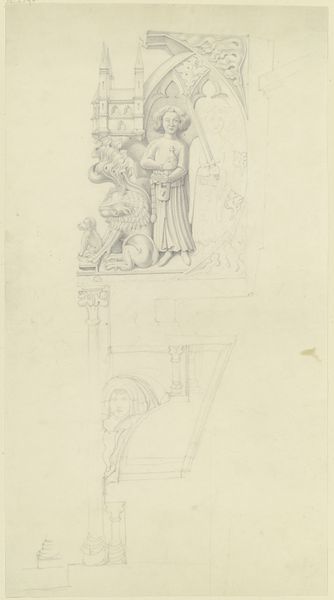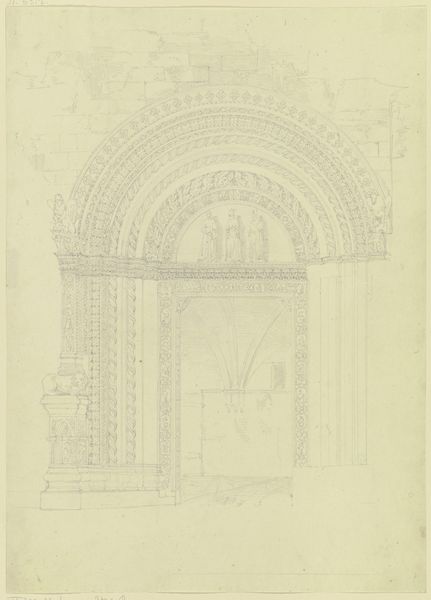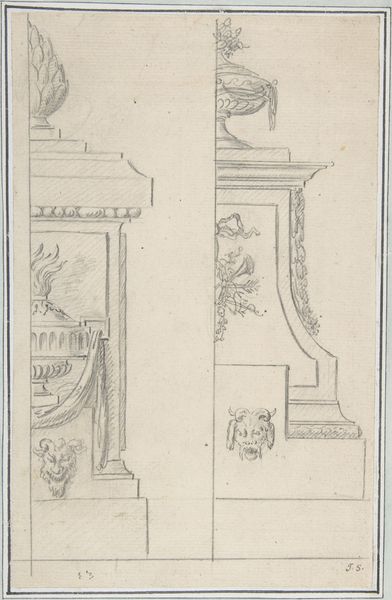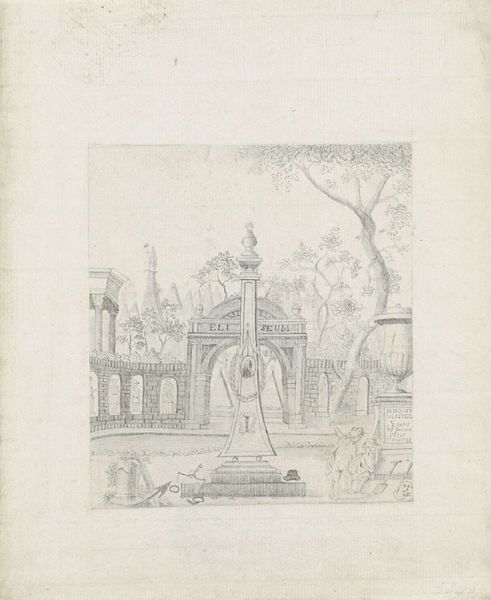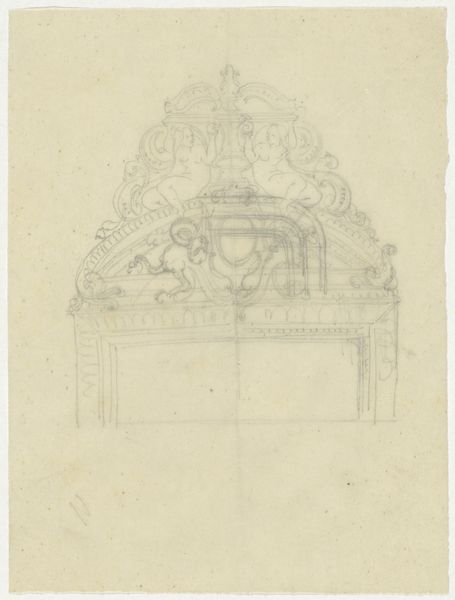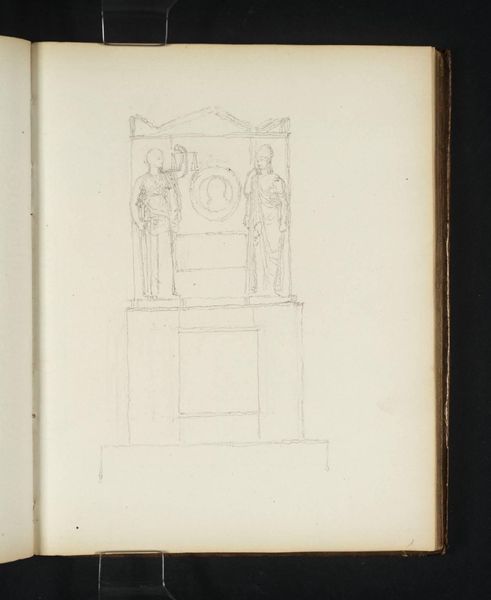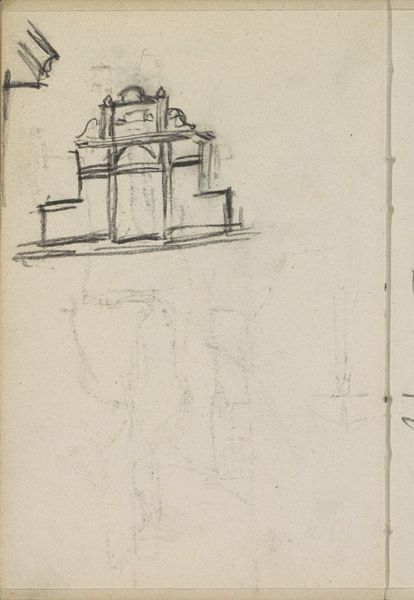
drawing, pencil, graphite, architecture
#
architectural sketch
#
drawing
#
aged paper
#
quirky sketch
#
neoclassicism
#
french
#
old engraving style
#
hand drawn type
#
landscape
#
form
#
personal sketchbook
#
sketch
#
pen-ink sketch
#
pencil
#
15_18th-century
#
line
#
graphite
#
sketchbook drawing
#
sketchbook art
#
architecture
#
initial sketch
Copyright: Public Domain
Curator: The drawing before us, from the Städel Museum’s collection, is titled "Monument mit figürlichem Schmuck." While it lacks a definitive date, it is attributed to Jean-Baptiste Lallemand. What are your initial thoughts? Editor: There is a quiet, contemplative quality to it, a kind of muted grandeur. It feels more like an idea taking shape than a definitive statement, very preliminary. I immediately notice the careful linework describing the monument's geometric planes. Curator: Absolutely, Lallemand emphasizes form, with the triangular obelisk contrasting sharply with the rectangular base. What strikes me are the subtle neoclassical elements at play: the stylized figures reminiscent of ancient friezes, the geometric purity, and, of course, the central crest with emblems all suggesting layers of symbolic meanings. Editor: Crests and pyramids carry tremendous weight. The crest centrally placed suggests power, dynasty, or perhaps an important societal order. The pyramid is about ascension. Could this then speak to an eternal ruling power? Is it meant for the gods or perhaps is this an expression of deification? Curator: Possibly both! Consider how neoclassical artists appropriated Egyptian forms—the pyramid being perhaps the most potent— to evoke notions of timelessness, authority, and even the afterlife. I would point to how the interplay between void and solid shapes gives it presence, that it rises above the ephemeral quality we see in other drawings of its kind. Editor: I see figures adorning the base, each rendered in an almost ritualistic gesture. I am reminded of the dance processions for the spring festivals on the Temple of Luxor’s columns! These figures are visual reminders of historical continuities. And is that a draped figure posed at the obelisk corner to witness their story? I sense a profound link to ancestral traditions and maybe civic values represented through a visual record that can withstand eras. Curator: The figure introduces depth and gives the composition its crucial vertical counterpoint. Its draping adds texture in contrast to the rigid obelisk. Lallemand orchestrates a series of relationships: linear versus volumetric, austere versus decorative… it’s through these contrasting elements that the form comes to life. Editor: In scrutinizing the monument, one grasps echoes of collective experiences, traditions made permanent through artistic endeavor. It almost whispers ancient secrets. Curator: By focusing on these subtle, nuanced visual cues and arrangements, we unlock layers of intended meanings held within it. A potent illustration of structure shaping content.
Comments
No comments
Be the first to comment and join the conversation on the ultimate creative platform.
